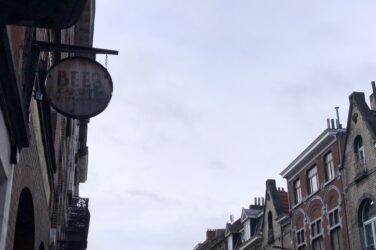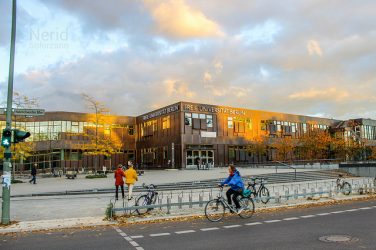E&M‘s ‘snapshot’ series is back. This time, our writer Phoebe Ollerearnshaw transports us to bustling Lisbon, The City of Seven Hills—home to a thriving street life scene and lashings of delectable cuisine.
Lisbon: ‘Bursting at the seams with vibrancy’
Lisbon was recently named as one of The Telegraph’s top 25 European city breaks for summer 2018—and for good reason. Portugal’s capital city is bursting at the seams with vibrancy: from the beautifully coloured buildings to the buzzing social scene and the warming countenance of the locals.
Cobbled streets, gothic ruins and domed cathedrals arm Lisbon with a distinctive aesthetic that is hard to replicate anywhere else in the world. Walking through the labyrinth of alleyways will supply visitors with a better sense of the city’s true vibe. There’s a distinctly youthful, funky feel that ebbs through the place. Although, this isn’t to say Lisbon isn’t a suitable destination for families. In fact, quite the contrary. Despite being a thriving capital, the rhythm of the city is decidedly slower than its European counterparts. You’ll catch glimpses of the locals taking leisurely walks by the waterfront or participating in relaxed brunch time catch-ups. This is the culture here and it would be rude not to follow suit.
It also doesn’t hurt that the region is blessed with wonderful weather conditions.

A temperate climate and varied terrain
Lisbon’s average annual temperature is 21.5 °C during the day and 13.5 °C at night. In the warmest month, August, the typical daytime temperature ranges from 24 to 33 °C. Lisbon even enjoys one of the most optimal amounts of daylight hours in Europe. Days in winter are longer than the northern part of the continent. Average hours of daylight in December, January and February are approximately 10.3 hours. In comparison to London, Moscow and Warsaw whose average is eight hours.
Lisbon is identified by its steep, calf-testing hills. While there are various modes of transport, the best and most beneficial way to explore the city is to do so by foot. Many of the city’s hidden treasures would be easily missed if you weren’t walking. At every turn, you’ll find dazzling street art, kitsch shops and fascinating museums. Scout out one of the many hidden lookout spots to experience a panoramic view of the city; the sloping cityscape is almost picture perfect. If you ever find yourself short of breath, hop on one of the quaint trams that pass through the city. The unmistakable tinkle of their bells can be heard as they glide down the sloping hills.

Lisbon’s cuisine
Food culture is highly regarded in Lisbon and, being a seaside port, it draws its inspiration from the ocean. A plethora of seafood is offered in almost every restaurant in the city with restaurateurs exhibiting the freshest catches of the day. For quick eats, visit the bustling Time Out Market located in the Mercado da Ribeira at Cais do Sodre. A stream of local producers competes here to present their carefully constructed plates. Here you’ll find everything from grilled octopus and soft shell crab burgers to steak tartare and homemade cheesecake. When visiting Lisbon, there is one delicacy that cannot be missed—pasteis de nata (custard tarts to you and me). There is one particular place that is the undisputed master of crafting these sweet delights. In Belem, just off the waterfront, is the Antiga Confeitaria de Belem. Tarts can be purchased here for a couple of euros; a small price to pay for ecstasy.

Lisbon by night
In terms of nightlife, Lisbon has a buzz that is hard to beat. As evening descends, the streets become alive with activity as wine bars and late night cafes start to pack out. Bairro Alto is regarded as one of the cooler areas to hang out, although the infamous Rua Nova do Carvalho—better known as ‘pink street’. This area has experienced a revamp over the last few years and is now home to one of Lisbon’s most important clubs for underground music, Music Box. Generally, clubs in the capital are bursting with African influence and attract a diverse crowd.
Overall, Lisbon is the ideal destination for individuals with a zest for architecture and relaxed socialising. Spend a long weekend traversing the city’s pathways, absorbing the picturesque views and experiencing the sublime cuisine.
Feature image courtesy: Rustam Aliev | via Flickr | CC BY-SA 2.0






